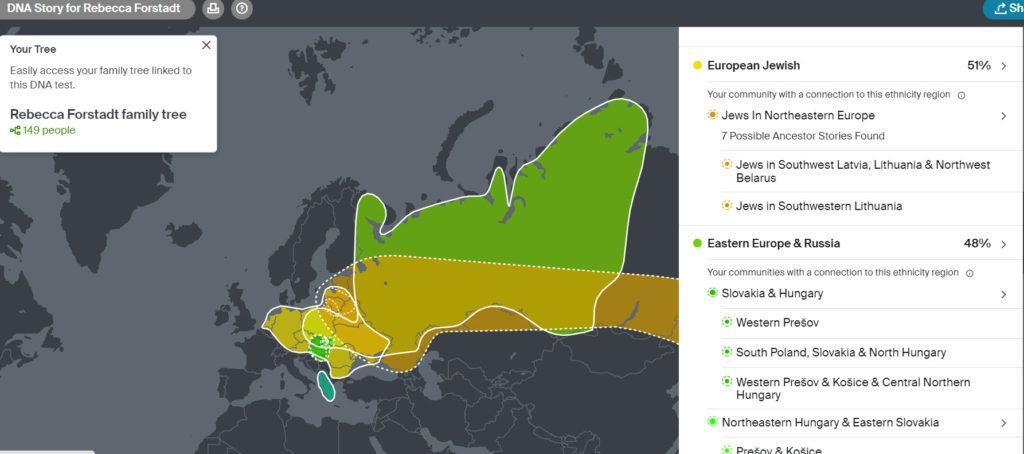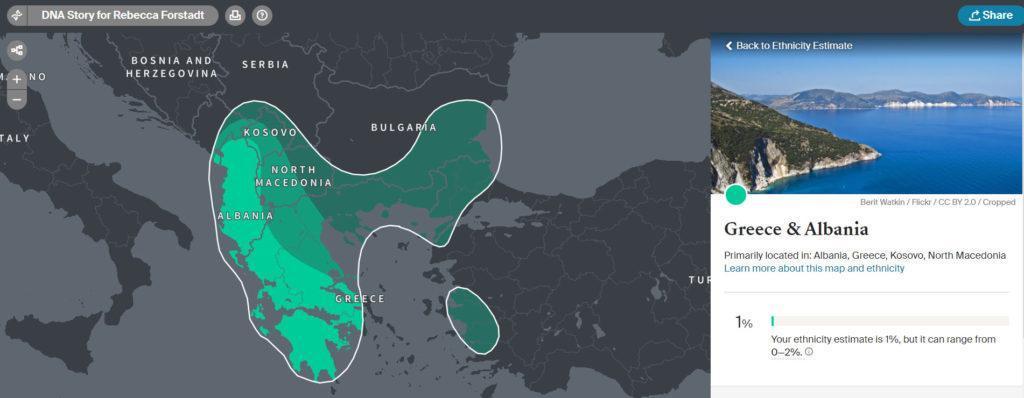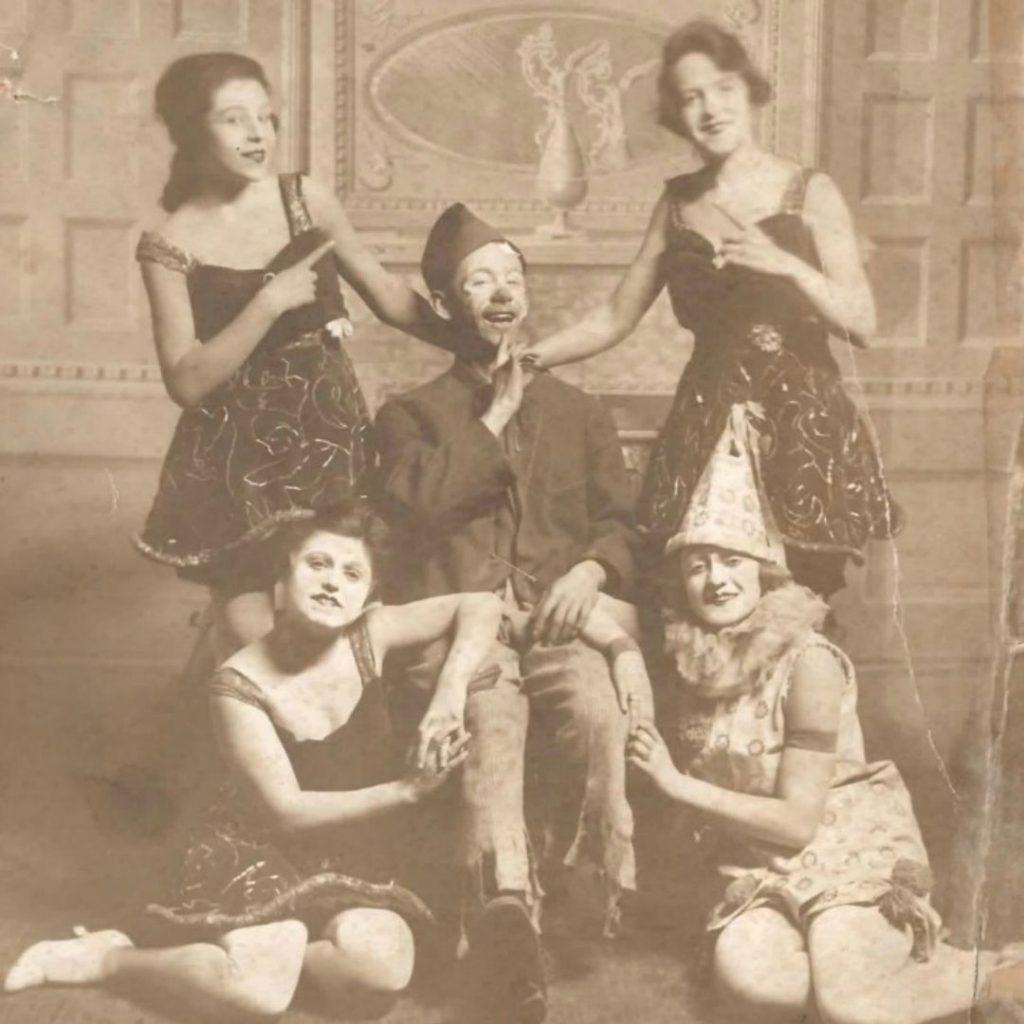If you are American and your family wasn’t native, they emigrated here from another country at some point in time. I’ve always been interested in knowing more about my family’s immigrant past and their arrival in America.
99% of Americans have ancestors who came to the U.S. from another country. Only 1.7 percent of the US population is 100% Native American due to interracial marriage or rape in the past according to a 2012 study.
Have you looked up your family’s ancestry?
I had my Ancestry DNA test done a few years ago and my results showed that I’m 51% European Jewish, 48% Eastern European and Russian, and 1% in the areas of Greek and Albanian. Ancestry frequently updates its database to give you the most accurate picture of your family’s history.
Immigrants that are connected to the Eastern European Jewish side of my father’s family may have come from Latvia, Lithuania, or Northwest Belarus.
My mother’s relatives were non-Jewish Central and Eastern Europeans with DNA from Slovakia, Hungary, or Poland.
I also have DNA traced to Greece or Albania.
My family tree
I have been playing around with my family tree as well and have so far found ancestors born as early as the late 1700s. It’s been sort of tricky because many of them lived in shtetls that didn’t keep records. Jews in those areas were often transitory due to religious or political persecution.
The Jewish Eastern European side of my family
The parents of my grandfather on my father’s side came to America from Bialystok, Poland, and his mother’s family came from Augustov, Poland. Both families arrived in New York City through Castle Garden as immigrants in the late 1870s.
I’m not sure what prompted them to come but I can imagine it had much to do with religious persecution. Jews have been in Poland since the Middle Ages. In the 14th century, protections were given to them by Casimir the Great, allowing them to thrive in relative tolerance. They developed a rich cultural heritage during that time.
By the end of the 19th century, Białystok was mostly Jewish. The city became the capital of New East Prussia in 1795 but after Napolean invaded it was awarded to the Russian Empire. They imposed geographic and professional restrictions on the Jewish community. Except for some well-off Jewish merchants, bankers, and factory workers, most of the Jewish population was poor and lived in shtetls. After the assassination of the Russian Tsar, the Jews of Białystok were frequently terrorized by pogroms and routinely massacred.
Augustów went under the control of Prussia in 1795 and became a part of New East Prussia. In 1807, it was incorporated into the Duchy of Warsaw before it was annexed to the Kingdom of Poland in 1815. By the mid-1800s the city was a multi-ethnic and multi-cultural center of Poles, Russians, and Jews.
My ancestors were fortunate to have left Poland for America when they did. The most intense hostility toward Jews ramped up after WWI and almost all the Jews in Białystok and Augustów were murdered by the Nazis during WWII. If they had left later, I wouldn’t be here.
Life in New York City
Both families settled in Manhattan. The Schonzeit’s had a butcher shop according to a relative who wrote a book about them. They lived in Manhattan Ward 12.
The Forstadts lived in Manhattan Ward 17 on Essex Street where my great-grandfather was a shoemaker.
They had their ups and downs, especially during the Depression. My father sometimes recollected his childhood after his family moved to Brooklyn near Coney Island. His father sold shoes and was a taxi driver for a while.
Years later, he owned a deli with my father in Denver during the 1950s. My great-grandparents who were both born in Białystok in the mid-1850s lived until their mid-90s and were married for 72 years. This accomplishment was celebrated in the New York Times.
My father’s mother performed in vaudeville in New York City as a teenager before getting married at 16.
The Non-Jewish Eastern European side
My mother’s family on her mother’s side came from Zavadka in the Saris region of Slovakia and her father was from Buda, Russia.
My great-grandparents arrived in Forest City, Susquehanna, Pennsylvania in the late 1880s, and my grandmother was born there in 1899. The family traveled by covered wagon and arrived in Ramah, Colorado in 1900 where they bought a farm. Many of their Slovakian cousins followed. Some became farmers while others worked as coal miners at the Industrial mine in Superior, Colorado.
My mother’s father Alexei Melinsky had a tragic story. He was born in Russia in 1885 and immigrated to Pennsylvania in 1906. He met and married my grandmother in 1917 and followed her family to settle in Superior, Colorado to work as a coal miner. Because my grandfather was Russian, my grandmother had to give up her U.S. citizenship as that was the law at that time.
He was lured back to Russia in 1938 after reading propaganda in Pravda but my grandmother refused to go with him with their four daughters. He planned to see how it was and send for them later. They received a letter from him from Donbas in Ukraine dated March 27, 1938. In it, he complained that his sister was trying to extort money from him so he moved out on his own. He was never heard from again after that. We don’t know what happened to him but can only imagine because WWII was starting and that area was volatile during Stalin’s rule.
The book Freedom and Terror in the Donbas: A Ukrainian-Russian Borderland, 1870s-1990s, describes the long history of horrors and atrocities that took place in Ukraine during that time. Sadly, it is continuing.
My grandmother became a “naturalized” citizen again in 1939 and worked as a housekeeper and nanny.
Do you come from a family of immigrants?
If you sign up for Ancestry DNA, you can also purchase a DNA saliva test that you take at home. Send your sample back and wait for the results. You may be surprised at what you find out. Your DNA test results will also connect to your Ancestry.com family tree account making it even easier to connect all the dots.
Immigrants are what make America great. Be proud of your roots.
Did you know that you can find out what breeds your mutt is? Read about dog DNA tests here.
Have you looked into your family’s immigrant past? Please leave a comment below.







I loved reading about your family! Just last week I sent my DNA sample into Ancestry and am excited to learn the results. Years ago I took a stab at trying to track down my family, but I quickly learned it took a lot of time which I didn’t have. Your story is particularly fascinating. I feel so bad for your grandparents. It must have been so difficult for her, never knowing what happened to him and them for him… You’re made of strong stuff!! xoxo, Brenda
Thanks, Brenda. You’re right, it does take a lot of time. One of my brothers, now deceased did quite a bit of work on our family tree so I was able to plug a lot of it in and then use the hints to find more. I’m glad you’re getting yours done. It’s fun to find out.
Rebecca, this is fascinating. Thanks so much for sharing it. I was in touch with a wonderful friend last week
after the bombing in Pennsylvania. She is such a wonderful woman and does much for her Jewish congregation. I have reached out to other Jewish friends also. Your blog is so needed right now–yet I am energized seeing so many people lined up to vote. Fingers crossed and hearts hoping, Beth
Thanks, Beth. I’m not much of a “religious” Jew but show up occasionally for holidays. Still, it’s in my blood and I was devastated when I heard about the shooting in Pittsburgh. It’s been gratifying hearing from staunch Republicans who are voting for values over their party. I just saw an interview with Captain Sully that was incredible. Let’s hope we prevail so America can change for the better.
Great post. You have such a fascinating family history. I am addicted to Ancestry.com and tracing my roots primarily back to the Mackenzie Clan of the Scottish highlands and the far reaches of Norway. I hope to make a pilgrimage to both places. And yes immigrants make America great.
So good to know, Pat. Making a pilgrimage is such a great idea. We went to Poland but didn’t get a chance to visit Białystok and Augustów. I hope to go there again someday. We passed Slovakia on a river cruise but that didn’t count.
I’ve been thinking about doing a dna test. Just amazing how much information is available. Really interesting!
It’s pretty amazing, Ellen. I hope you do it. It’s cool to see who you’re connected to.
I find that highly interesting about your grandmother having to be “naturalized” even though she was born in PA. I’ve done my DNA too and found the results interesting. Most things we expected and some unexpected.
I was surprised by my grandmother’s citizenship situation. Could you imagine something like that happening today?